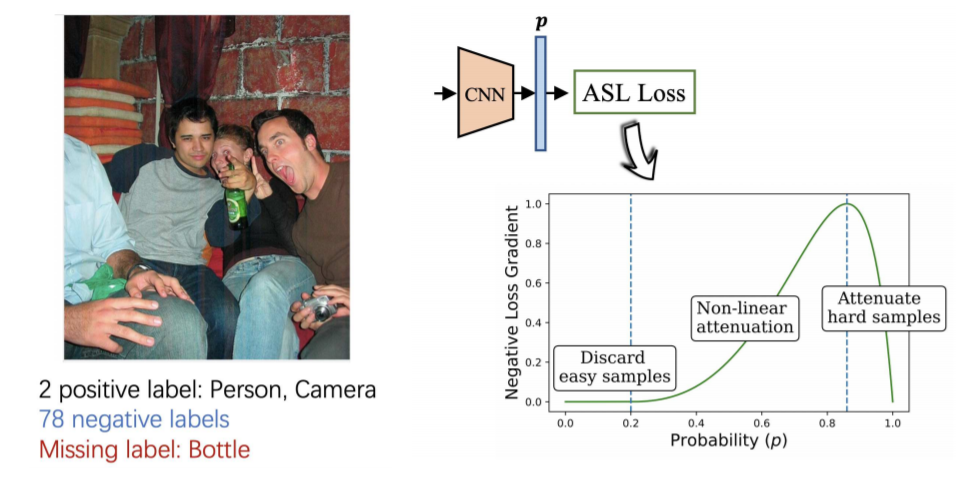Asymmetric Loss For Multi-Label Classification
In a typical multi-label setting, a picture contains on average few positive labels, and many negative ones. This positive-negative imbalance dominates the optimization process, and can lead to under-emphasizing gradients from positive labels during training, resulting in poor accuracy. In this paper, we introduce a novel asymmetric loss ("ASL"), which operates differently on positive and negative samples. The loss enables to dynamically down-weights and hard-thresholds easy negative samples, while also discarding possibly mislabeled samples. We demonstrate how ASL can balance the probabilities of different samples, and how this balancing is translated to better mAP scores. With ASL, we reach state-of-the-art results on multiple popular multi-label datasets: MS-COCO, Pascal-VOC, NUS-WIDE and Open Images. We also demonstrate ASL applicability for other tasks, such as single-label classification and object detection. ASL is effective, easy to implement, and does not increase the training time or complexity. Implementation is available at: https://github.com/Alibaba-MIIL/ASL.
PDF Abstract ICCV 2021 PDF ICCV 2021 Abstract










 MS COCO
MS COCO
 NUS-WIDE
NUS-WIDE
 PASCAL VOC 2007
PASCAL VOC 2007
